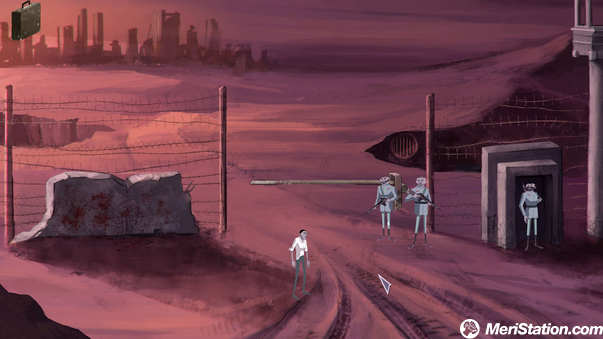The World after the New Wave
About two weeks ago we published the analysis of the second episode of Life is Strange, one of those titles that is assigned to the school Telltale / David Cage of the considered new
Graphic Adventure, the one that discards the traditional Point `n Click, which seeks to escape from its confinement, to give more fluidity to the playable base.
But the truth is that few genres have endured without evolving their mechanics as traditional graphic adventure has done. Aiming and clicking is as valid today as it was 20 years ago. The thing is still working, and also part of the new generations discover it and
fall in love with it, as with the old movies of the 80s. Fictiorama is a young Spanish studio raised with the same AVs that many of us, and Dead Synchronicitya whole title of Old School Point ‘n Click.
Three brothers and a friend, tools almost artisan to take this forward, and the important support of Daedalic -which recently brought us the great Randal’s Monday , another Spanish game-, today is the most traditional AV, have got Dead Synchronicity deservedly on everyone’s
lips this week. And not because it is a Spanish game, but because it is a quality title, well finished, with careful elements and a history that absorbs localized –
which is not dubbed- into Spanish, something essential in this genre and that affects its ability of immersion if the language is unknown -Square Enix, some miserable subtitles in Life is Strange would not have ruined you. We are going to enter this apocalyptic nightmare of drama and misery.
Survivors of the New World
Talking about the plot of Dead Synchronicity is one of those delicate tasks. So let’s be careful: In general, we wake up in a dunghill full of poor, sick, beggars who were once businessmen, hunters of everything that moves. We are in a gigantic concentration camp no matter how much the police want to call it a refugee camp. We are a character named Michael,
who has awakened there, and what we thought the world today has suddenly become a post-apocalyptic nightmare, after a phenomenon known as the
New Wave made Humanity run out of electricity, without computers, systems or machines, and I had to go back to the times of doing everything by hand. The debut of Fictiorama begins without any intention of giving us any hope or just a dash of humor, and things will not improve, but will become more dramatic.
This is where we must stop, since the plot created for the game must be discovered by the user and not vilely spoiled. We will only say that this Tomorrow Comes Today bases part of its potential on a story that engages to use the well-known resource of ‘to see
what has happened / why I am here’. But not by default it stops working if you know how to use – JJ Abrams still works just as well – and Fictiorama doses the data and causes each conversation to be a discovery of new information in this first part of a
playable triptych that still We do not know the date of his second delivery, and it may take us 5 or 8 hours depending on our ability to solve the puzzles. We will say that although his tempo asks us for patience,
But little else can be objected in this section, since Fictiorama is removed from the manga a resource that we have loved, something that happens to the character from the first time he leaves the initial caravan and is superbly implemented – we will not say what
is it that will disorient us as much as the protagonist? This, together with the achieved atmosphere of making us feel within a miserable future -the prostitute
girl, broken families, repression and despair, stepping on the next one to continue living- round the immersion in their plot and they manage to give the game a personality that does not remain merely in the stylized of its visualization, as if we crossed the future of the TV series Dark Angel with the Jewish ghettos of Nazi Germany.

